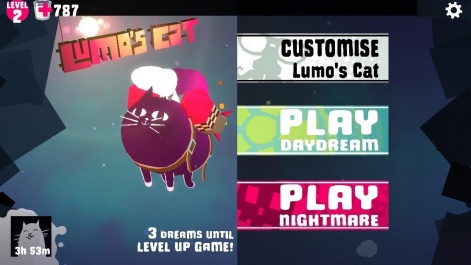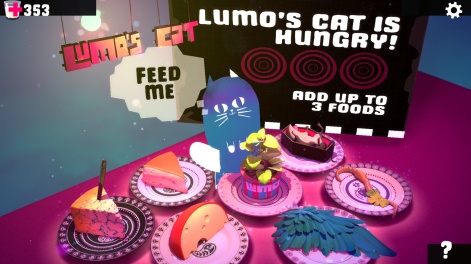It's safe to say that Team Lumo has a good track record.
The Leamington Spa, UK-based indie developer launched 2012's Kumo Lumo and 2014's Lumo Deliveries to critical acclaim, each notching up over a million downloads in the first week.
Not bad for a five-person team.
However, after launching the follow-up - Lumo's Cat - in October 2015, it realised it had made a few costly missteps with the very title that should have capitalised on the momentum of past successes.
"It was only after creating a new version of the game for Apple TV that we could see all of the stupid things we had done," revealed Team Lumo Director Steve Stopps.
With a major overhaul of Lumo's Cat addressing many of the issues having just been launched, PocketGamer.biz reached out to Stopps to discuss the process and what his team learned from it.
PocketGamer.biz: When did you first realise that Lumo's Cat was not going to achieve the success of its predecessors?
Steve Stopps: We could see that there were issues with Lumo’s Cat from the very first day. Looking at the data, we would see we were losing lots of players from the very first battle.
Looking at the data, we would see we were losing lots of players from the very first battle.Steve Stopps
We could also see that players who completed the FTUE were not sticking with the game. Having showed the game shortly after release at MCM Comic Con in London, watching players gave us the information we needed to resolve the big tutorial issues.
However, this left us with bigger issues - why were players not engaging with the game?
Kumo Lumo and Lumo Deliveries both racked up 1 million downloads in a week. Could you provide some comparable figures from Lumo's Cat to contextualise your disappointment?
The initial installs of Lumo’s Cat were strong, the issues was retention and player experience.
We had a really strong community of players with both our previous titles, but Lumo’s Cat just didn’t have the same buzz.
We believe this is simply because the overall experience was not as strong as we had hoped, and this was reflected in what we were seeing in data from the game.
How did you find Apple TV development, and how exactly did this process alert you to issued you'd previously overlooked?
Shortly after the release of Lumo’s Cat, we managed to secure an Apple TV Dev Kit. We had been looking at doing a console version of Lumo’s Cat, and this seemed like the ideal chance to see our game on the big screen.
We wanted to make a true living room experience, so redesigned the game from the ground up to be a fast-paced, two player co-op game.

Technically the development process was straightforward. However, the menus and player experience took a lot of redesign.
We even created our own companion app to provide the second controller. We were really happy with the results. It was frenetic and super accessible.
We made a tight game loop, that players could play again and again. This was our lightbulb moment.
What were some of the "stupid things" you did, and - in hindsight - why do you think you did them? What action will you take in future to prevent it happening again?
We were simply trying to be too clever with Lumo’s Cat. We had lots of nice ideas, and too many of them made it into the final game.
For example, players could choose their own difficulty by selecting what food their fed the cat. This is cute, but obscure. I think Harry Slater referred to it as "esoteric".

So we introduced a much simpler main menu, with clearer choices for the player. We also made it much easier for players to get back into the game.
Tell us a little about this overhauled version you're launching, and how exactly it differs from the original release.
A few simple changes had far-reaching consequences. For example, the feed-the-cat screen formed a key part of our monetisation. removing this meant a complete redesign of the entire in-game economy.
We could also see from the data that lots of our players found the game too difficult, while others found the game too easy. This presented us with a challenge.
We created an adaptive level system that aims to deliver the the right level of challenge for the players ability and play style.
Finally, we had some reviews that said the game was repetitive, so we have added some special events that introduce different mechanics to add variety.
Reflecting on the whole experience, is there anything you'd encourage other developers to learn from this?
Definitely stay away from being creative with the main menu.Steve Stopps
Players don’t know your game as well as you do, and are less inclined to devote their time to it to discover its secrets! So try and eliminate assumptions as much as possible.
Give the player clear instructions, and ensure they understand the consequences of the choices they have. I’d also try and be creative where it really matters, in the minute-to-minute gameplay.
Definitely stay away from being creative with the main menu, as their is your primary interface.
If players are confused, they will leave. We are a small team of 5 developers, but we still use data to improve our games. It is like having a direct dialogue with your players.
It doesn’t give you the answers, but it helps point you to where the problems are. Finally, working on the TV version freed us to return to the mobile version with fresh eyes.
However, it takes real honesty and courage to make such big changes after launch, and I admire the team for pushing to take on such a big challenge.
The 2.0 update of Lumo's Cat is available on the App Store.




















